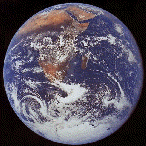
You may wish to print a copy of the lecture outline (minus the illustrations) and you have two options:
The Earth is truly dynamic. I suggest that you consult the Planet Diary to become aware of what's happening!
Geologic Features at a Sludge Dump Site, at the link given in the Chapter Heading, focuses on one waste management plan. Read this one for content.
During your lifetime you will be called upon to help make decisions, often not easy ones, that will affect the quality of life. The geological information gained through this course will provide some of the background needed to make intelligent decisions. Before beginning this chapter, take time to reflect on several of the principles that have been a theme throughout this course.
Throughout the semester you have read about a number of processes operating in the atmosphere, on and near the surface and at depth. Cycles involving some subset of these processes have been shown to have occurred throughout geologic time (or at least throughout a large portion of geologic time). The super-continent cycle notes that when continent-continent collision results in the welding together of two plates, heat will begin to accumulate in this thickened crust because granites are not good conductors. The increase in temperature causes the crust to expand with an accompanying change in stress from compressive to tension. If this stress persists the sutured continents may break apart, starting the cycle over again.
In general, geologic processes do not operate in isolation. Changing one condition in one cycle may result in a change in other processes operating in other cycles. For example, the subduction of marine limestones and the eventual melting releases carbon dioxide into the atmosphere during volcanic eruptions. Increased carbon dioxide will increase the temperature of the air and the Earth's surface.
Lovelock's Gaia Hypothesis was mentioned briefly in Chapter 1 of the text. Lovelock developed a Daisyworld model in which only Black and White daisies inhabit a planet. When the temperature rises the Black daises die because they absorb heat, whereas the White daisies reflect heat into the atmosphere. As the proportion of White daisies increases, the temperature decreases and the Black daisies increase in abundance. Notice that there is a negative feedback in the sense that changing one thing (temperature) results in a change in another (the proportion of White daisies) which acts to bring the system back began. Some systems exhibit a positive feedback mechanism which causes the system to rapidly move away from where it started; for example, the increasing frequency of a sound system which is not properly tuned (hence the name "feedback"). A company makes money, invests in new machinery, produces more of its product and makes even more money. This would create an upward spiral. Sometimes the spiral can be downwards....sort of like "its just one darn thing after another...."
Case Histories